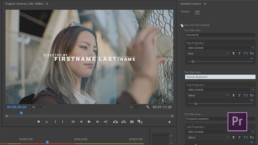ADNEC to launch first-of-its-kind meeting space in Abu Dhabi
‘The Hive’ is a unique concept where innovation and design converge to enhance the outputs of business events
A new development is set to redefine the meeting and conference space in Abu Dhabi. In direct response to the rapidly changing demands of event organisers and attendee expectations at business events, the Abu Dhabi National Exhibitions Company (ADNEC) has recognized the importance to introduce a new, flexible, first-of-its kind space for meetings and events. Named ‘The Hive’ this new style of meeting space is launching by the end of the current year. It has been developed to offer a vibrant environment for meetings and events specifically designed to encourage attendee participation and in turn maximize the outputs of face to face engagement.
The Hive will complement ADNEC’s existing portfolio of event spaces by introducing a multi-functional environment which combines functionality with aesthetic appeal. Unlike traditional meeting rooms, “The Hive” incorporates a boutique auditorium designed on the same principal as an amphitheater. This design reimagines the traditional speaker to audience relationship and encourages more open dialogue and audience participation. In addition, The Hive offers multiple modular and flexible seating arrangements enabling attendees at events to effectively organize themselves into smaller working parties to collaborate on joint initiatives in an environment which immediately places them at ease. Privacy is also offered with a variety of fully equipped and serviced offices, boardrooms, desks, pods and breakout areas. Every aspect of The Hive has been carefully designed to offer business event organisers the opportunity to allow their attendees to feel energized and comfortable to collaborate on shared initiatives, whilst supported by the latest technology.
Humaid Matar Al Dhaheri, Group CEO of ADNEC, said: “The idea of collaborative meeting spaces is fast gaining traction as being crucial to the success of an event or a conference. Given Abu Dhabi’s growing reputation as a hub for leading international conferences and the diverse global nature of the events that ADNEC hosts and organizes, we decided that the time is right to adapt to the requirements of the international event community and create meeting spaces of the future. In developing The Hive, ADNEC undertook research with a broad client base. The feedback was overwhelmingly positive that ADNEC’s focus on enhancing the output of business events is in stark contrast to the traditional concept of being a provider of blank canvas spaces for event producers to adapt to their specific needs. In addition, research has shown that digital distractions are vying for attendee’s attention in traditional meeting environments, with its one-way, speaker-centric format. The Hive will be a dynamic gathering space that integrates the architectural essentials of light, form, and material, as well as great coffee and food, to offer a stylistic, customizable, next-generation meeting area which will maximize the participation and learning from those in attendance.”
He added: “ADNEC believes that the meeting room of the future is not just a place where people come to be told something, rather it will be a place where people come together to make personal connections with likeminded attendees. We also believe that people are at their creative best when placed in comfortable, flexible settings, and so we decided to embrace "The Hive" as a significant step in this direction. It will add to the existing conference and event facilities at our venues and bolster the growing reputation of Abu Dhabi as a global hub for events and cutting-edge infrastructure, thus enhancing our competitiveness and capabilities in attracting leading international conferences and events which falls in line with our strategy aimed at strengthening the Emirate’s position as the region’s Capital for business tourism.”
“Event organizers will now have another reason to prefer ADNEC as hosts and organizers for leading international events and congresses. The Hive will also do away with hierarchy and make participants realize they are a vital part of the decision-making process. It will allow them to be relaxed enough to engage in productive conversation and experimentation and to get into much closer proximity with thought leaders.” Al Dhaheri added.
The Hive development follows the inauguration in 2017 of the ADNEC Innovation Lab. Since opening the Innovation Lab, event organisers reaction to having an alternative meeting environment has been sufficiently positive that ADNEC recognized that the building and interior design has a direct impact on output of business events by developing a culture based on collaboration, creativity and innovation. The Hive builds on this concept and extends it to the events space to unite global minds and foster greater collaboration and cooperation, for more productive outcomes.
Wacom and Magic Leap Team Up
For over 20 years, Wacom has converged traditional styles of art into digital workflows for the Desktop PC, Mobile Tablet, Smart Phone and now Spatial computing.
Today, Wacom and Magic Leap will announce its exclusive partnership at the L.E.A.P (Learn, Engage, Accelerate, Program) Conference in Los Angeles, California.
The partnership is aimed at delivering spatial computing and pen input solutions, for content creators seeking hyper-realistic, collaborative, 2D and 3D work environments – all without the need for a screen. It will transform the way people see, interact and build content in the creative space, via games, movies, photos and products.
During the keynote presentations at L.E.A.P, Nobutaka Ide, CEO of Wacom, will present an overview of the exclusive partnership with Magic Leap and the creative solution the two companies have been working on over the last two years.
“Wacom and Magic Leap are collaborating to define the future of digital design workflows together,” says Mr Ide. “Our goal is to provide the best instruments for creative expression and our unique solution, combining precision pen input with spatial computing, will allow creators of all disciplines including animators, industrial designers, game developers and educators to create and collaborate in ways few dreamed possible.”
Faik Karaoglu, Executive Vice President of Wacom’s Creative Business added, “together, Wacom and Magic Leap are staying ahead of the technology curve by creating innovative products for artists and designers of the future. We look forward to continuing being the indispensable partner for the creative professional community of today and tomorrow.”
Wacom and Magic Leap’s prototype demonstration will simulate a four-person collaborative design review meeting, where the participants will each be wearing a Magic Leap headset linked to Wacom Intuos Pro pen tablets. The end result will be a work session that allows the design team to view, scale, move, sketch and annotate 3D content in a vivid, realistic environment.
“Magic Leap and Wacom believe that the computing experience should be completely natural and intuitive,” says Rony Abovitz, CEO of Magic Leap. “The solutions we’re developing together will define how the next generation of creatives will work tomorrow.”
Moving forward, Wacom and Magic Leap will continue to validate their prototype by working closely with the entertainment and design communities and fostering a 3D application ecosystem through relationships with creative software developers.
The L.E.A.P. Conference is Magic Leap’s first developer conference and will host creators, developers and technology partners from around the world. The conference will include keynote addresses, workshops, product demonstrations and networking opportunities.
For more information on Wacom and the L.E.A.P. Conference, please visit:
www.wacom.com and www.magicleap.com/leapcon
Adobe Unveils Next Generation of Video Innovation at IBC 2018
Adobe (Nasdaq:ADBE) today unveiled new video features coming to Adobe Creative Cloud that will speed up production timelines, enable more seamless workflows and deliver powerful capabilities to bring filmmakers’ and video professionals’ creative visions to life. The updates include Adobe Sensei-powered animation, intelligent audio cleanup tools, selective color grading, advanced data-driven motion graphics templates and end-to-end VR 180 support. These new features will enable filmmakers and video professionals to spend more time shaping their next creative project and less time on repetitive editing tasks.
Adobe’s Premiere Pro, After Effects and other Creative Cloud apps are behind some of the most cutting-edge work in Hollywood over the last year, including series such as “Atlanta,” “Stranger Things” and “MINDHUNTER;” documentaries like “RBG,” “Unbanned” and “Wild Wild Country;” music videos such as Childish Gambino’s “This Is America” and Jason Mraz’s “Have It All;” as well as upcoming feature films “Searching,” “The Ballad of Buster Scruggs” and “THE OLD MAN & THE GUN.”
“Video professionals face short deadlines, clunky handoffs and long lists of deliverables,” said Steve Warner, vice president of digital video and audio at Adobe. “This latest Creative Cloud release introduces new innovation and capabilities to address these challenges and make common tasks faster and easier.”
These updates follow Adobe’s recent unveiling of Project Rush, the first all-in-one, cross-device video editing app designed specifically for online content creators. Project Rush delivers a streamlined and intuitive user experience that makes creating and sharing online content easier than ever by harnessing the power of Premiere Pro and After Effects, and Project Rush projects are seamlessly opened in Premiere Pro. Currently in beta, Project Rush will be available later this year.
Faster Video and Audio Workflows
New capabilities coming later this year to Adobe Creative Cloud include:
- Explore new ways to animate – Mold layers into new, dynamic shapes with new Mesh Sculptingtools that twist, bend and scale under your creative control in After Effects. Leveraging artificial intelligence and machine learning technology in Adobe Sensei, instantly create and animate unique, stylized puppets using a webcam and reference artwork with Character Animator’s new Characterizer.
- Sound better – Instantly improve audio with intelligent cleanup tools, DeNoise and DeReverb, in the Essential Sound panel in Adobe Audition. Dial down or remove background noise and reverb from a sound clip that’s been intelligently adjusted by adaptive algorithms.
- Take control of color – Take the guesswork out of curve adjustments and bring simplicity and precision to selective color grading and color management with new Lumetri Color tools in Premiere Pro and After Effects.
- Turn data into stories – Drag and drop spreadsheet files to Motion Graphics templates to generate visual representations of information within video projects using data-driven infographics in Premiere Pro.
- Jump into immersive video – Add new support features for 180-degree immersive video in Premiere Pro and After Effects, including optimized ingest, effects and output in Google VR 180 for viewing on YouTube or other platforms.
- Collaborate seamlessly – Invite groups and individual collaborators for Team Projects and easily access team members from your enterprise address book to choose collaborators and save groups.
- Improve Adobe Stock workflows – Search and sort millions of curated, contemporary 4K and HD cinematic footage and professionally-designed Motion Graphics templates, right from the Essential Graphics panel in Premiere Pro and After Effects.
Attendees at this year’s IBC conference can get a closer look at the newly revealed features and hear from industry experts at the Adobe booth (#7.B35, Hall 7, RAI Amsterdam) and at over 100 partnerbooths from September 13–18. Tune-in to Facebook Live with Jason Levine on September 13 at 9 a.m. PST to hear about the upcoming release.
Pricing and Availability
The new features for Adobe Creative Cloud announced at IBC will be available with the next version of Creative Cloud coming later this year. For more information on pricing, visit https://www.adobe.com/creativecloud/plans.html. Multiple subscription plans for Adobe Stock are available at https://stock.adobe.com/plans.
Setting Up Processes As A Freelancer To Make Your Business Run Smoother
When you first become a freelancer you don’t think about all of the responsibilities that you now have to take on. You have to be the marketer, the accountant, and just about anything that is involved in day-to-day business maintenance. It can get very overwhelming and time-consuming. That’s when you need to set up processes for your business so you can spend less time at a screen and more time with your family or out travelling the world.
Now, some of you may wonder what I am talking about when I say “processes.” I simply mean automating the tedious, and time consuming tasks that come with being your own boss. This could include e-mailing, posting to social media, blogging, to even how you process your clients. Having things already set up and ready to go makes things a lot easier and less time consuming. Some examples of things you can do include…
1. Create e-mail templates Some people over-look this and often don’t think about it. Creating e-mail templates can save you a lot of time. It’ll take a little time to make them but in the long run it’ll make things run a little smoother. So, instead of typing out all of your client’s e-mails individually, you can just copy & paste into a template that is simple and to the point. That way you don’t have to worry about missing anything and ensure you’re sending a consistent message to all clients.
2. Invest in a social media scheduling program Social media can be one of the largest pains a business owner can run into. In this day and age, if you aren’t on social media, people most likely have no idea who you are. It’s a really good idea to get involved in social media and to stay up on your posting. It can be hard when you’re working so hard during the day on other things for your business you can forget about posting your next tweet or post on Facebook. It may be a good idea to look into a social media management platform that can help you schedule your posts and stay on top of your brand. Some examples of this would be Hootsuite and Buffer.
3. Creating a solid marketing plan, and following through with it. Most freelancers don’t think about this step. Making a marketing plan is crucial to a business’ success. It helps guide you and your business along it’s journey, so you aren’t stuck saying, “well, what’s next?” Scrambling to figure out your marketing is so time consuming. You wouldn’t have time for anything else. Marketing plans depend on the company and their target market. I’d recommend reading about marketing plans and see what the other people in your industry are doing. Once you have your marketing plan it’s all about following through with what you have planned. This can be the hardest thing because you almost have to create a schedule or a system. I found what helps the most is downloading a to-do list that you can set reminders on your phone as well as what time each task needs to be done by. The one I use on my Android is called SplenDO. It’s free, so check it out! This can be extremely helpful when scheduling your social media posts, if you decide to skip the social media management platforms. It can also keep you on top of your promotions and making sure to promote yourself on a regular basis.
4. Creating a process that can work with all of your clients. Some freelancers like to dive into projects without looking at the details, which, in the long run, could cause bumps in the road along the way. You’re struggling with getting your projects off the ground, you’re struggling getting your payments on time, or your projects just end up being a complete mess. It’s a good idea to outline the process that you need to put all of your clients through to make the project run smoothly. Some of these items including talking with them, getting information from them, getting payment from them, signing a contract, etc. By outlining it, you can then create PDF documents or templates of the questionnaires your clients need to answer, or the contract you’re going to have them sign. So then every time you get a new client, all you have to do is gather the documents, and send them their way for completion. It makes things a lot more smooth and lets the clients know from the jump what to expect while working with you. This can also help weed out the clients who are not quite ready to commit. If someone complains that your process is too complicated, then they aren’t serious about the project. Anyone who is serious about having you work on their project will do what it takes to make sure things are smooth for you as well as themselves, even if it takes a little work on their end.
These are only some examples of things that you can do to make your company run smoothly. Now, some freelancers have other tasks that they have to do that some don’t. It’s all about finding a solution that will help automate the whole process so you don’t have to worry about it. Even if that means investing a little money. I’ve always heard spending money to save time is always worth it, and I’d have to agree. Stop spending all of your days at a screen, it’s time to go see the world, and its time to automate your business.
Crowdsourcing and the Designer: Is It Worth It?
Crowdsourcing is a very big thing nowadays. Whether you're crowdsourcing funds on Kickstarter or you're farming out creative work - it's everywhere.
In some cases, this can be a very good thing. In 2014 the cult TV show Veronica Mars got the big screen treatment and this was all down to crowdsourced funds from fans of the original show.
But when it comes to design, many believe that crowdsourcing is doing more harm than good, with many agencies and designers finding it hard to compete with the rock-bottom prices and volume of options these crowdsourcing sites can offer. The sad fact being that quality is pushed aside in favour of quantity and value for money.
More often than not, crowdsourcing design is presented to the designer as a competition. A group of around 30 designers will produce designs based on a brief from a business or individual, where the prize is essentially to get paid for their work.
From a business point of view, if you can get 30+ people to design your logo for you, then you pick the best one and get it for a fraction of what you'd pay an agency, or even a freelancer in some cases, then it's a serious win.
But what about those other designers? And even the profession as a whole? Surely by participating in crowdsourcing of design, you're devaluing yourself and your services as a designer? Assuming you're not the one who wins the work, as with Highlander "there can be only one", you've potentially wasted hours of your time for free. And for those lucky few who do achieve victory, is the prize really worth it?
Sure, if you look at 99designs as an example, their lowest competition prize is $299 - but when your chances of winning are only 3.33% why waste your time?
Managing Expectations
Are you a design professional? Even if you’re not, you probably know a little bit about, or have had experience with, managing client expectations. Everyone manages expectations on a daily basis whether we realise it or not, and one of my favourite axioms is that a resentment is really nothing more than an unmet expectation. Wise, right?
I’ve had a few interesting conversations lately both with design professionals and potential clients. The chat with the pro (an interior designer) went something like this: “I want to be more clear about the design services I offer. Clients hire me and they think they’re going to get a whole house designed when the package I offer is really per room. Then they’re angry when I don’t deliver.” Unmet expectations! What is the solution to this? Communication is really the key, although I will be the absolutely first to tell you that people hear and see what they want to see. You could have a flashing neon sign that outlines exactly what a client will be getting, and they still have a vision in their head that they can’t let go.
“The greatest gift for a design professional is a reasonable, well-informed client who has done her research. A good client makes a good designer which makes a great end product!”
If you’re an interior designer, or really any type of designer, you most likely offer a contract or scope of work. This is important, because you always want something to refer back to when that unpleasant conversation comes up: “Well, I thought you were going to do this, this and that too.” So keep something written, or have clear, written terms on your site of what you will deliver. You can’t force people to comprehend this, but at least you have something solid to base that discussion on should it arise.
The other thing I’ve noticed about potential clients in all areas of design is they truly have no idea what something should cost. Like, none! And trust me, I’m the same. Like when it comes to cars. I know a Maserati is expensive, and I know it looks good, but under the hood I straight up could not tell the difference between a Maserati and a Ford. They function the same, they get you from place to place, but really, what is the difference? Apparently, I’m right, and it’s mostly under the hood, the unseen stuff. So a client sees a room by celeb interior designer Kelly Wearstler, and it looks amazing, but overall, it’s really just a room with some stuff in it right? So why can’t you (insert your name here, designers), deliver the same room? I’m sure most designers have been in this position no matter what your speciality.
I also recently had a great conversation with a potential client (I’m a graphic and web designer by trade). She had sent me a message with a list of her requests. She referenced some very high-end, expensive blogs and websites. She was super clear with exactly what she liked about those sites. Now, at first glance, a lot of websites look the same (like the new Fords look a lot like Jags at first glance). And trying to match a general look and feel is fine (eg. if a client says they like the chic boho feel of the Anthropologie website, it tells me what type of graphics to incorporate). Overall look and feel is important and totally attainable (eg. “I want a clean blog, splashes of pink, sans serif font”). But the extensive customization, not always visible at first glance, is not always within my scope of work. That’s where managing expectations comes in.
The really cool thing about this exchange was I gently pointed out to this client that with all of the features she was wanting, she was probably looking at about a $20k site (oh yeah, and that’s on the cheaper side). And you know what was amazing? She came back to me and said that she had been reaching out to other designers, and that was exactly in the neighbourhood of quotes she was getting. She was so nice and she completely understood. Instead of being horrified at the cost, she had done the research and realized that though sites may look really similar, when you start getting into a lot of customization, the price tag goes way up, way fast.
And that was fantastic. I gave her a few tips of things she could implement on her own, clearly she did not hire me because I explained I wouldn’t be able to provide what she wanted and I did not want her to be angry or disappointed with the end result, but it was an enlightening exchange. I just really appreciated her being so understanding and able to “see what she couldn’t see” if that makes any sense. By being open-minded and willing to do the research, she will make a good client for someone, just not my company.
I know if you’re any kind of creative design specialist you encounter the same issues, because sometimes the product you’re delivering is not necessarily cut and dried (like if you’re an office supply company, you’re delivering 100 printers, and that’s that). But design is subjective so it’s harder to create a scope of work. But if you’re a potential client for any type of design service, shop around. If you see a site you love, see if you can find out who designed it (most designers add a link in the site footer). Get a quote from them. If you go visit a friend and their house looks amazing, find out who did it, and call her. Then call celeb designer Kelly Wearstler!. The more research you do, the more understanding you will have of what something should cost. At my company, I keep our prices well within reason. I want to give clients a great-looking website at price they can afford if they’re just a part-time blogger or small business owner. But because of this, I want clients to understand that they won’t be getting a $10k or $20k website. The greatest gift for a design professional is a reasonable, well-informed client who has done her research. A good client makes a good designer which makes a great end product!
Is Innovation Dead Or Are We Just Asleep?
It seems that not a day passes where I don’t hear someone commenting on how all our smartphones are just slightly shinier copies of one another or how company A is ripping off company B and so on.
It got me thinking recently, have we hit the peak of our generation’s innovation with an abrupt halt or are we just climbing the next hill with a future that could give back to the future a run for its money on the horizon? After all, we all wear Nike Air Max providing that you’re happy to live in a shoe, seeing as they are selling for nigh on a mortgage deposit.
In all seriousness though, we have in the last few years seen a significant decline in breathtaking new technology on the consumer front. All phones are coming in with minor and expectable upgrades year on year, consoles just catch up with 3 year old PC’s, VR is still too niche to be widely appreciated and the smartwatch boat sailed before it even properly docked.
With this being said, when we take a glance outside the comfort of our gadget filled bubbles and look at technology on a wider scale, then we noticed the bigger things happening around us. I read an article not long ago about a cranial device that was aimed at users with severe physical disabilities allowing them to move a camera/screen faced robot (reminiscent of Sheldon coopers device for avoiding getting a cold – holla big bang theory fans) that could be moved using the users brainwaves and gave them the ability to explore and interact on an incredible level, opening up a plethora of possibilities for them despite their holdbacks.
This is just the tip of the iceberg, every day I stumble across something new and incredible that someone somewhere is developing that can actually shape and change our future beyond ‘the thinnest laptop ever* (*for the next five minutes)’.
The trouble is, without being that preachy person, we are so caught up in the latest and greatest of our favorite brands and companies, that we don’t venture our research or conversations far enough to actually find out what is going on out there. Don’t get me wrong, I’m sat here on my MacBook, typing and listening to Spotify on the latest iPhone. I’m the dictionary definition of a gadget reliant millennial that’s never off the grind, but that’s exactly why I take the time to expand my knowledge.
So next time Apple’s keynote comes up short in your estimations, be at peace knowing that there are people out there shaping us a better future. Chances are it’s not those same people lining their wallets by adding a new number onto the name of a 3 year old device.










